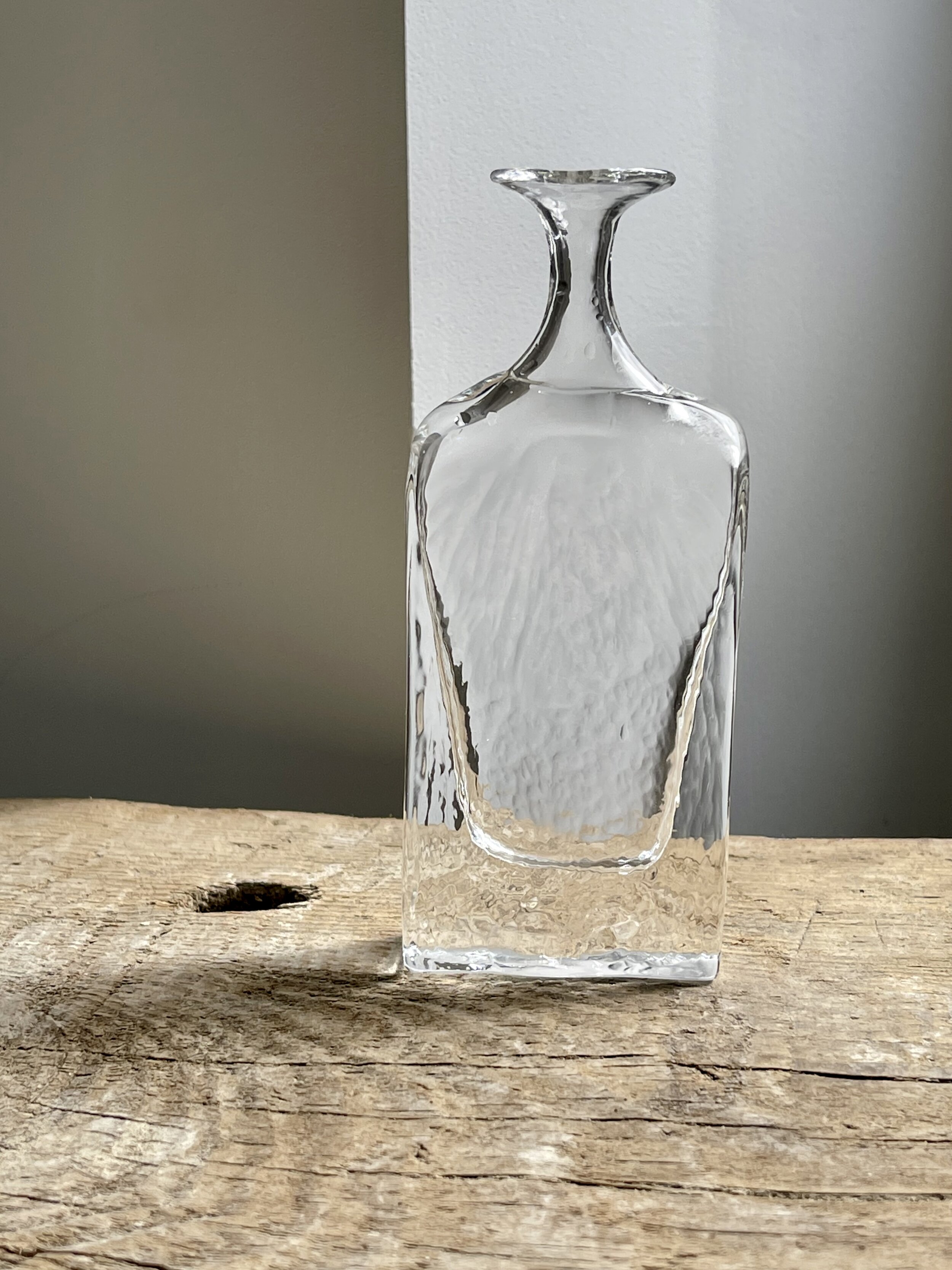Yoshihiro Nishiyama
variations
July 3rd, 2021 — July 31st, 2021
“ I was a trainee of Utatsuyama Kogei Kobo ( Utatsuyama Craft Workshop ) in Kanazawa from the age of 24 to 27. The reason why I entered there was because I didn't know what I should make. I tried various ways there, but I realized that I was not someone who wanted to say something or express myself at all. That's when I became fascinated with glass of old ages. I had never seen such glass until then. Glass from the Edo period and glass made just after the Industrial Revolution still have a lot of hand-made parts, so they are imperfect. But I thought that was really interesting. I thought it would be great if I could duplicate these kind of glasses from the old days, like in ceramics. I felt that I would be better suited to this kind of work.
I was attracted by the softness of the old glass. As it was not intended, I find it even more fascinating. I'm sure the craftsmen of the past would have liked to have made something more complete, but they had to make a lot quickly, and I think that caused some distortions. (Showing us a picture) For example, the mouth of this glass from the Edo period should have been designed to look like modern glass, but it ended up looking a little crooked like this. It was all that was possible at that time. The soft feeling of the glass also came out even though they didn't try to make it so. I like the sense of unintended. What I'm doing may or may not be the same as that, but that's what I've been trying to do.
For me, glass is liquid. It is something that goes from soft liquid to solid. I am trying to show the liquid part of it in my glass. Blown glass can only be expressed by its shape. For example, the balance between outline and inline is the key to my sake cups. The softness of the molten glass on the inside is interesting, but it becomes more attractive when the outside has straight line. The outside of the glass is actually a little bit distorted, but I think it's an interesting balance. This is not a design, but a point that I found while making. It is inspired by glass from the Edo, Meiji, Taisho, and early Showa periods (from around 1710 to 1940).
In terms of technique, my style is called "mold-blown.'' When you heard of using a mold, you might think of just pouring molten glass into it, but I blow it with my mouth to some extent before putting it into the mold. Depending on the balance and temperature of the glass, even if it is blown into the same mold, the result will be completely different. It's not good if the glass is too cold, and conversely, it's not good if it's too soft. It's really a small thing. But depending on those little things, the result will be totally unlike. I think I have a strong obsession with seeing it through repetition. Even if I'm making 50 pieces of the same type,
I'm doing it with the intention of finding something in the form each time. “







